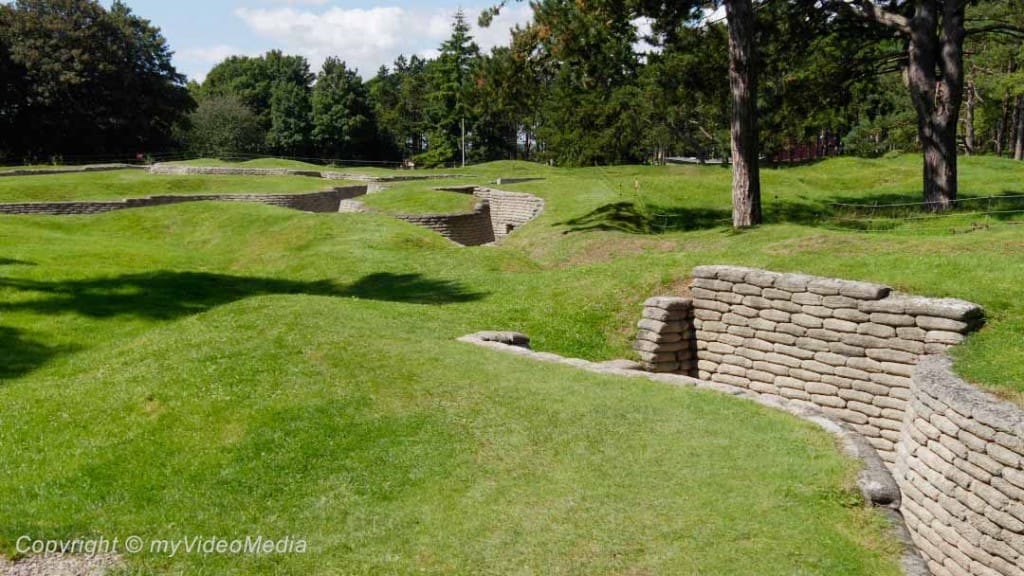The battle of Vimy in World War I, a part of the battle at Arras, was an identity-giving event for the Canadian nation.
The Canadian Corps under the command of Julian Byng, who later became Governor General of Canada, had a decisive function in the conquest of the mountain ridge of Vimy.
Subordinate to him was General Arthur Currie, the first Canadian who reached this rank. After his active time in military service, Arthur Currie was principal and vice-chancellor of McGill University.
Almost half a million soldiers on an allied side (British and French troops) stood opposite to around 300.000 soldiers on the German side.
As of April 2nd permanent artillery fire, accompanied by use of toxic gas, was directed to the war front over a length of 40 km. Also mines and utility shafts were built.
For mining, tunnels were driven under the enemy lines and chambers filled with explosives which was ignited shortly before the attack. The utility shafts should allow to bring soldiers and supplies to the front line and to evacuate the casualties. On April,9 1917 the attack in the Battle of Arras was opened.
Actually, only the Canadian corps was successful, these succeeded to occupy the ridge and to make 3400 prisoners within the shortest time. An essential part of the success was based on the careful planning of general Arthur Currie.
The battle lasted until 16th of May 1917. 30.000 Canadian soldiers were in the field, 3598 had been killed and about 7.000 were wounded.
Overall, Canada had to mourn 60,000 victims in the first world war. 150,000 soldiers died in the Battle of Arras on the British side, slightly less on the German side.
In memory of this cruel battle where the Canadian soldiers played an outstanding role, France donated the area to Canada.
The Crête de Vimy (Canadian National Vimy Memorial), an impressive memorial commemorates this sad chapter in world history.
In 11 years of construction, the Canadian architect and sculptor Walter Seymour Allward created the 27 meters high and 6,000-ton memorial, which was unveiled the 26th of July 1936 by King Edward VIII. Since 1996, the Crête-de-Vimy is a National Historic Site of Canada.
A large part of the area has not been cleared of mines and can not be entered. A tunnel, some trenches and shell-holes, but also craters from large mines can be visited.
Two Canadian cemeteries honor the mostly young men who lost their lives here.

We dedicate this video in memory of all the victims of the war, hoping that something like this never happens again!
Please watch the 4K UHD video
You are currently viewing a placeholder content from YouTube. To access the actual content, click the button below. Please note that doing so will share data with third-party providers.
More InformationPlease read on > Historic center of Rouen
Pin it for later

Text, photos and video: Copyright © myVideoMedia




